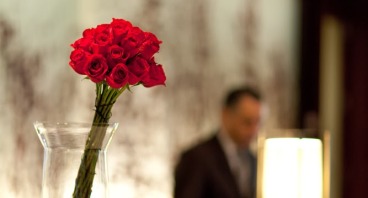Interior design is extremely important for any business, but is especially essential for a hotel. Guests from all walks of life will be coming in and out of your establishment, and some will stay for a decent amount of time. How you present your space, its cleanliness, and the friendliness of its employees speaks volumes about your business. You want guests to not only feel welcomed, but comfortable. You want them to feel like they've made good decision by staying at your hotel, and encourage them to come back again. Below are six tips to make the most of your building's interior.
Don't go too bright or too dim with colors
Color is crucial, as it can create a distinctive mood. You want your hotel to have its own look and style, but appearing either too loud or too boring can put off guests. Come up with a color scheme based on the location of your hotel, its cost, and the type of guests who generally stay there.
For instance, a posh hotel in the downtown area might want to go for the elegant, opulent look. A red would be great for the walls, but fire engine hues would be a bit much. A slightly deeper red balanced out with some silver décor and a carefully placed chandelier will create the impression that you are looking for.
A seaside hotel, on the other hand, might want to opt for blues and greens. You don't quite want it to look like the seabed (too dark), but loud neons would bother a lot of people. Pick seafoam greens and sandy-colored yellows for a more relaxing mood. Putting a tank in the lobby with some bright fish will be a great way to throw in a little added color without annoying anyone.
Light and color go hand in hand
The most important mood setter in your hotel, along with color, is light. Depending on the type of lighting that you use, a space can be cozy, calm, vibrant or cheerful, but the color will factor in as well. Shaded yellow table lamps, when paired with a burning fire in a brown-colored lodge will, predictably, provide a rustic, relaxed setting. White walls with a mixture of overhead lighting, white floor lamps and spotlights in a suite with big windows will provide an airy atmosphere.
Your best bet -- no matter the type of establishment that you are running -- is to provide your guests with several different types of hotel lighting in their rooms. That way, they can control the atmosphere and set the lights for their maximum comfort.
Texture matters
While it's important for colors to match, take note of the different textures in the room, including fabrics, furniture, and decorative accessories. Texture can enhance a room's features and play up or deemphasize lighting and color, making it a great way to balance your space.
Always match
Having items in a room that don't match can be a pet peeve for guests. You don't want to be generic, but there is such a thing as too eccentric for your own good. A well-designed room will have pops of color and light that draw the eye and keep you interested, while still investing in symmetry of form. The colors should complement each other, devices around the room should match, and décor should have something that ties it to the rest of the room, whether it is a pattern, a color, or a shape.
Get seasonal
Change up your hotel's interior to reflect the current season. You don't have to buy new bed sheets or furniture -- simply add some nice seasonal decorations on night stands and in common areas.
Don't make guests feel crammed
The comfort of your guests is of the utmost importance and is often be determined by the physical boundaries of the room. Too little space limits guests, while too much space makes it look like you've skimped on furnishings. Find a happy medium and stick to it!


